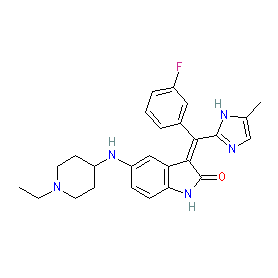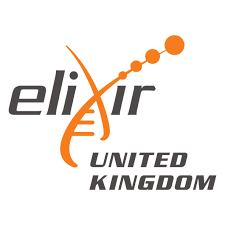GtoPdb is requesting financial support from commercial users. Please see our sustainability page for more information.
|
Compound class:
Synthetic organic
Comment: Compound 8i is a multi-target receptor tyrosine kinase inhibitor [1]. The chemical structure matches that ascribed to the Exelixis compound XL999 presented by MedKoo, but there is no peer reviewed confirmation of this nomenclature linkage.
Compound 8i does not alter c-MET activity, so its effects can be compared to those of foretinib and/or cabozantinib which are c-MET inhibitors, to help assess the contribition that inhibition of the different kinases makes to measured outcomes (e.g. antiproliferative effect). Ligand Activity Visualisation ChartsThese are box plot that provide a unique visualisation, summarising all the activity data for a ligand taken from ChEMBL and GtoPdb across multiple targets and species. Click on a plot to see the median, interquartile range, low and high data points. A value of zero indicates that no data are available. A separate chart is created for each target, and where possible the algorithm tries to merge ChEMBL and GtoPdb targets by matching them on name and UniProt accession, for each available species. However, please note that inconsistency in naming of targets may lead to data for the same target being reported across multiple charts. ✖ |
|
|||||||||||||||||||||||||||||||||||
| References |
|
1. Kim MH, Tsuhako AL, Co EW, Aftab DT, Bentzien F, Chen J, Cheng W, Engst S, Goon L, Klein RR et al.. (2012)
The design, synthesis, and biological evaluation of potent receptor tyrosine kinase inhibitors. Bioorg Med Chem Lett, 22 (15): 4979-85. [PMID:22765894] |
|
2. You WK, Sennino B, Williamson CW, Falcón B, Hashizume H, Yao LC, Aftab DT, McDonald DM. (2011)
VEGF and c-Met blockade amplify angiogenesis inhibition in pancreatic islet cancer. Cancer Res, 71 (14): 4758-68. [PMID:21613405] |







